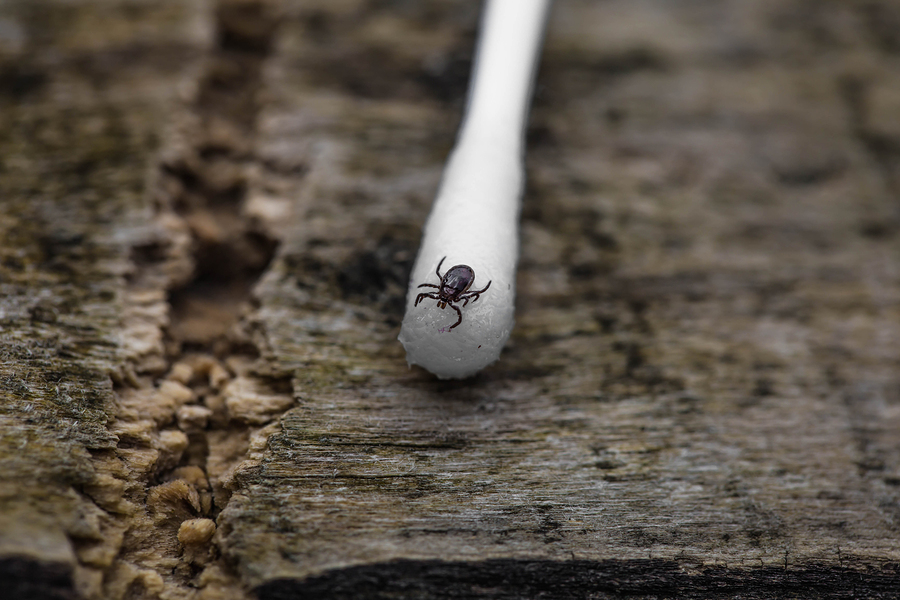Understanding Lyme disease
Lyme Disease is on the rise in the UK – known cases of the bacteria quadrupled between 2000 and 2011.
The NHS estimates there are now between 2,000 and 3,000 cases of Lyme disease a year in England and Wales, and the once little-known disease is beginning to get more attention.
What is Lyme disease?
Lyme Disease – also sometimes called Lyme borreliosis – is a bacterial infection that spreads to humans by infected ticks.
Ticks are tiny spider-like creatures found in dense woodland and heath areas in the UK, Europe and North America. They can also be found in gardens or parks, though it’s more common in areas of deep vegetation where they have access to animals to feed on.
Ticks don’t fly or jump; instead, they typically transfer to humans by climbing on to skin or clothing.
Ticks infect humans by biting the skin and feeding on your blood, transferring bacteria in the process.
Generally, if a tick remains attached to your skin for more than 24 hours you’re more likely to become infected. However, because ticks are small and bites are not painful, people often don’t realise they have become attached to their skin.
Signs and symptoms
Lyme Disease can be difficult to recognise because symptoms don’t always appear in the same way.
Many people with early-stage Lyme disease will develop a very distinctive, circular rash where they were bitten, sometime between three to 30 days afterwards. You’ll recognise it because it looks like a bull’s-eye on a dart board.
Other people experience flu like symptoms shortly after being infected: fatigue, muscle and joint pain, headaches, fever, chills and neck stiffness. If caught early, treatment can be simple and straightforward, and many people make a full recovery.
Left untreated, Lyme disease can develop more serious and persistent symptoms, including pain and swelling in the joints, numbness or limb pain, facial paralysis, memory problems and heart problems.
Because symptoms of Lyme disease can be similar to that of other conditions, it can be difficult to diagnose, but is most commonly identified with a blood test.
Preventing Lyme disease
Right now there’s no vaccine that can prevent Lyme disease – the best way to prevent it is by remaining sensible and aware of the risks.
Keeping to footpaths, avoiding long grass, wearing appropriate footwear and choosing light coloured clothing when walking in woodland areas will help you minimise the risk of getting bitten by ticks.
At the end of the day, inspect your skin carefully, including your head and neck. Check any pets, too.
Being bitten doesn’t necessarily mean you’ll be infected – it’s thought only a small portion of ticks carry the bacteria.
Stay aware
Most tick bites occur during late spring, summer and autumn when people are most actively involved in outdoor activities like hiking and camping.
Be sure to stay aware when in areas around the UK that are known to have a high population of ticks, including:
- The South Downs
- Exmoor
- New Forest and rural Hampshire
- Wiltshire and Berkshire
- Surrey and West Essex
- Thetfold Forest, Norfolk
- The North York Moors
- The Lake District
- The Scottish Highlands
If you’d like to find out more about Lyme disease, visit the NHS website or the charity Lyme Disease Action.
Have your or someone you know ever contracted Lyme disease? Share your experiences in the comments below.
Disclaimer
All content on Silversurfers.com is provided for general information only, and should not be treated at all as a substitute for the medical advice of your own doctor or any other health care professional. Silversurfers will not be responsible or liable for any diagnosis made by a user based on the content on www.silversurfers.com and we are also not liable for the content of any external websites or links from or to Silversurfers to any other websites. Please always consult your own doctor if you’re in any way concerned about any aspect of your health.
Rachel - Silversurfers Assistant Editor
Latest posts by Rachel - Silversurfers Assistant Editor (see all)
- Graham Norton’s funniest interviews - April 2, 2024
- Chocolate dipped strawberries for Easter - March 28, 2024
- Elton John’s Greatest Hits Playlist - March 24, 2024
- The best of Diana Ross - March 23, 2024
- Easter activities for grandchildren - March 23, 2024






















